Motorhome Tyres - The full story
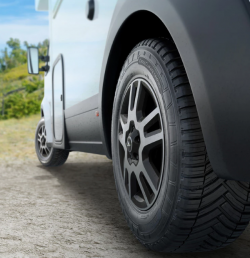
If your motorhome is a "Conventional Coach Built Motorhome", "Low Profile Coach Built Motorhome" or "A Class Motorhome" type, the performance of a C marked tyre may be insufficient. We recommend that you use CP marked tyres instead.
CP marked tyres have been specifically designed for heavy motorhomes. These motorhome tyres have a higher load index and pressure as well as a reinforced carcass.

The legal tyre tread depth for cars (also Motorhomes ) in the UK and Europe is 1.6mm across the central three-quarters of the tyre, according to law.
The tread must meet this minimum requirement across its complete circumference.
For the following:
Cars
Goods vehicles (<3,500kg)
Trailers and caravans (<3,500kg)
Most larger vehicles
At least 1.0mm throughout a continuous band across at least 3/4 of the breadth of the tread and around the entire circumference. The original tread pattern must be visible in the remaining quarter.
Having worn tyres means the only contact patch between you and the road is past its best.
You could almost call it an accident waiting to happen.
If the safety risks don’t hit home, maybe the risk of a £2,500 fine and three penalty points for a worn tyre will?
That’s per tyre, too. If all four tyres are worn below the legal limit, you could potentially lose your licence and face a £10,000 fine.
Motorhomes are vehicles that generally have a large intrinsic mass (the vehicle itself and the interior equipment) to which is added that of your travel equipment (luggage, bicycles...)
In addition, motorhomes have a high centre of gravity, a sometimes large overhang (the parts of the body between an axle and the end of the vehicle) and an additional load that may be unevenly distributed.
Since 2003, the ETRTO has recommended that tyres used on Motorhomes described above should carry a CP marking apparent in the tyre size description, instead of the normal C marking found on van tyres.
(European Tyre and Rim Technical Organisation)
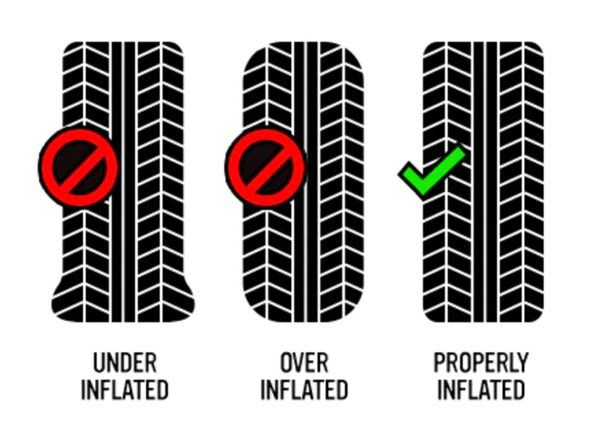
There is another important point to ensure safety and vehicle stability: the tyres of your motorhome must be inflated to the correct pressure. Indeed, the volume and pressure of the air inside the motorhome tyres determine the load they are able to carry.
Motorhome tyres with a CP marking are designed to run at a higher pressure than the pressure for vans (C marking), which gives better handling and increased resistance to the load characteristics of large Motorhomes.
For CP tyres fitted to Motorhomes, the ETRTO advises:
- On the rear axle: the motorhome tyre pressure should be 5.5 bar (80 psi). The maximum load capacity of the tyre must be respected. (Note that the use of a metal clamp in valve or specific high pressure rubber valve is required above 4.5 bar (65 psi)),
- On the front axle: refer to the manufacturer's inflation recommendations indicated on the vehicle and / or its handbook.
Don't forget that your motorhome tyre pressures should be checked and adjusted as necessary, monthly and before a long journey.
To maintain tyre condition and safety, before any prolonged period of parking:
- Ensure that tyres are correctly inflated to the recommended pressure. Absolutely avoid under-inflation, which would likely damage your motorhome tyres.
- As far as possible, protect your motorhome tyres from exposure to the sun because UV and heat are accelerating factors of premature tyre aging.
- Ideally, protect your motorhome tyres from contact with cold, damp floors by placing the vehicle on stands.
- Before use of the vehicle, check tyre condition and adjust tyre pressure appropriately.
If you want to drive your motorhome all year round in safety and without seasonal constraints, the best type of tyre is a 4-season tyre. something like the Michelin Cross Climate Camping
Motorhomes, what makes them different.
Motorhomes are vehicles that generally have a large intrinsic mass (the vehicle itself and the interior equipment) to which is added that of your travel equipment (luggage, bicycles...)
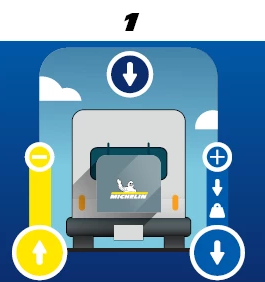
Uneven |
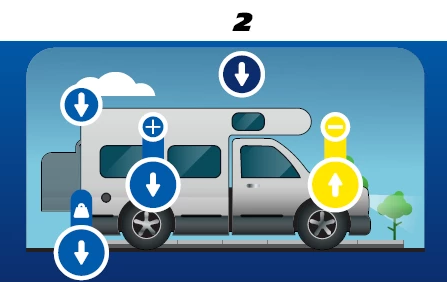
increased load |
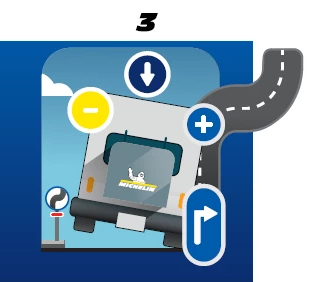
Fluctuation |
Tyre Sidewall Information
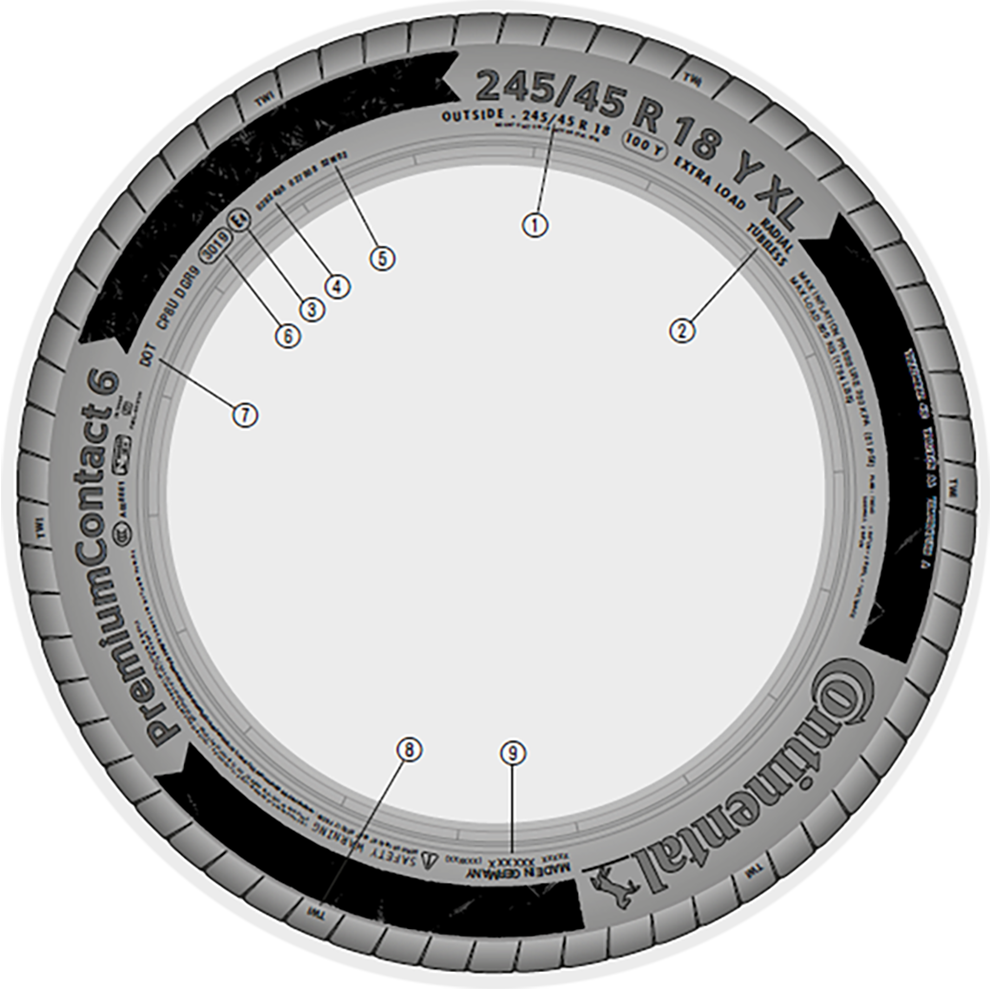
-
1 - Tyre specifications
In this example.
245/45 R 18 100 Y XL
245 Nominal section width in mm.
45 Nominal aspect ratio
(Tyre height is 45 % of tyre width).
R Symbol for radial tyre
(or RF for run flat tyres).
18 Rim diameter code.
100 Load Index “100” = max. load of this tyre
is 800 kg (see table page 8).
Y Speed Symbol, indicating max. speed:
Y=300 km/h / 187 mph.
Other information may be added after the size marking:
XL Extra Load, reinforced tyre for increased load capacity
(new: XL+ for especially high load capacity) -
2 - Tube Type
Sample - Tubless
- tubeless. (TUBE TYPE tyres must be mounted with tubes).
-
3 - Country of homologation
Marking indicating accordance with UN regulations. The number after the E in the circle indicates the country of homologation. E4 (4=Netherlands).
-
4 - Approval number
Sample - 0292495
Approval number acc. to relevant UN regulation.
-
5 - Compliance with noise
Sample - S2WR2
The string "S2WR2" indicates compliance with maximum permissible sound value S2, required wet grip and max. value of rolling resistance R2
-
6 - Production code
Sample - 3021
Production code (“30” means week 30, “21” means year 2021).
-
7 - Department of Transportation
sample - DOT
DOT =Department of Transportation, USA.
-
8 - Tread wear indicator
sample - TWI
TWI = Tread Wear Indicator. Cross ribs evenly spaced around the circumference of the tyre in the longitudinal tread grooves and becoming level with the tread surface when the remaining tread depth is down to 1.6 mm.
-
9 - Country of origin
sample - Made in Germany
Marking showing the country of origin.


